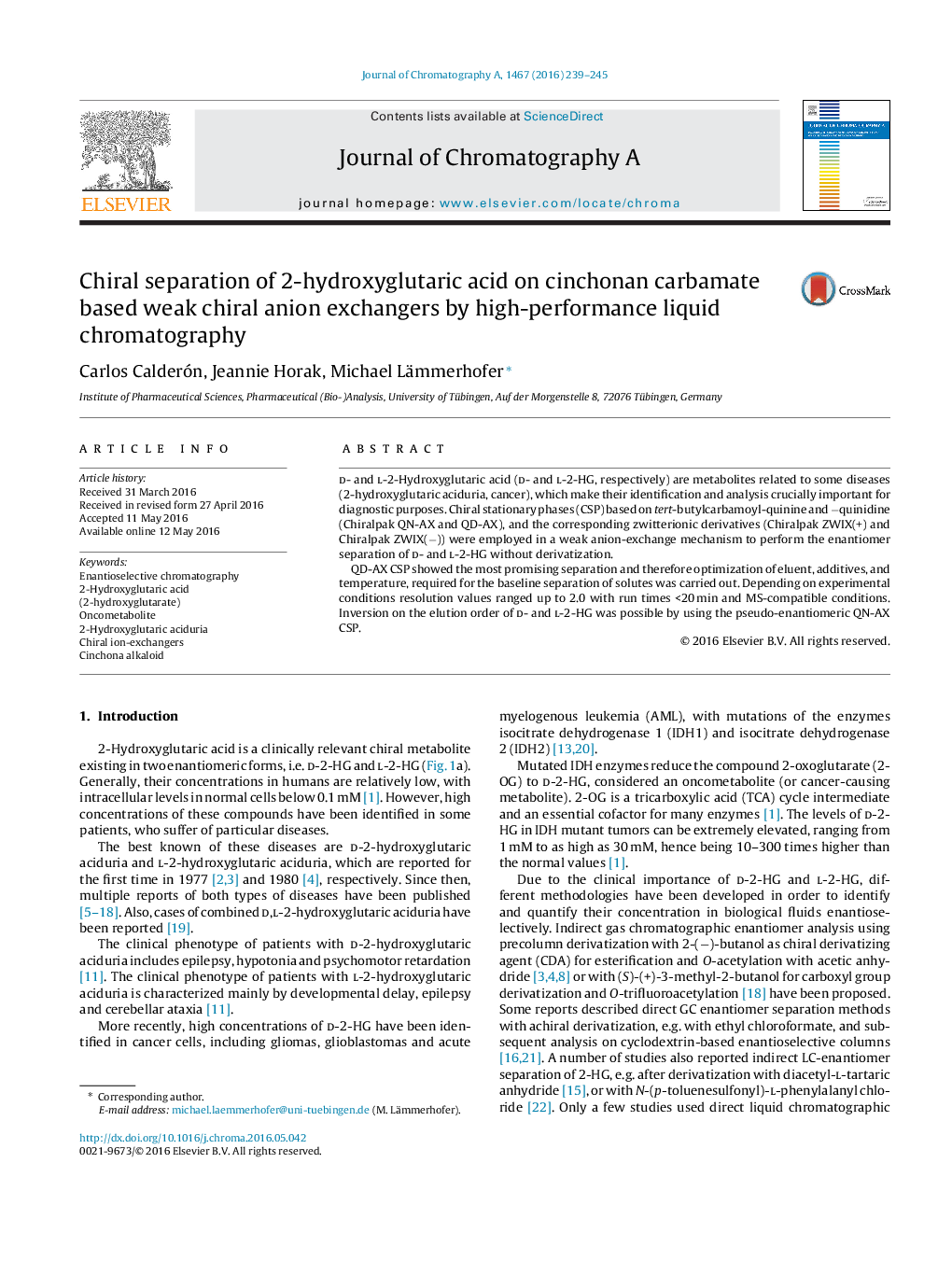| Article ID | Journal | Published Year | Pages | File Type |
|---|---|---|---|---|
| 5135627 | Journal of Chromatography A | 2016 | 7 Pages |
â¢Enantiomer separation of d- and l-2-hydroxyglutaric acid (2-HG) without derivatization was performed.â¢Weak chiral anion-exchanger based on quinidine carbamate (Chiralpak QD-AX) gives baseline resolution.â¢Inversion of the elution order was possible on corresponding quinine carbamate stationary phase.â¢New generic gradient elution screening procedure is proposed.â¢Systematic optimization of MS-compatible conditions was carried out providing insight into separation mechanisms.
d- and l-2-Hydroxyglutaric acid (d- and l-2-HG, respectively) are metabolites related to some diseases (2-hydroxyglutaric aciduria, cancer), which make their identification and analysis crucially important for diagnostic purposes. Chiral stationary phases (CSP) based on tert-butylcarbamoyl-quinine and âquinidine (Chiralpak QN-AX and QD-AX), and the corresponding zwitterionic derivatives (Chiralpak ZWIX(+) and Chiralpak ZWIX(â)) were employed in a weak anion-exchange mechanism to perform the enantiomer separation of d- and l-2-HG without derivatization.QD-AX CSP showed the most promising separation and therefore optimization of eluent, additives, and temperature, required for the baseline separation of solutes was carried out. Depending on experimental conditions resolution values ranged up to 2.0 with run times <20Â min and MS-compatible conditions. Inversion on the elution order of d- and l-2-HG was possible by using the pseudo-enantiomeric QN-AX CSP.
